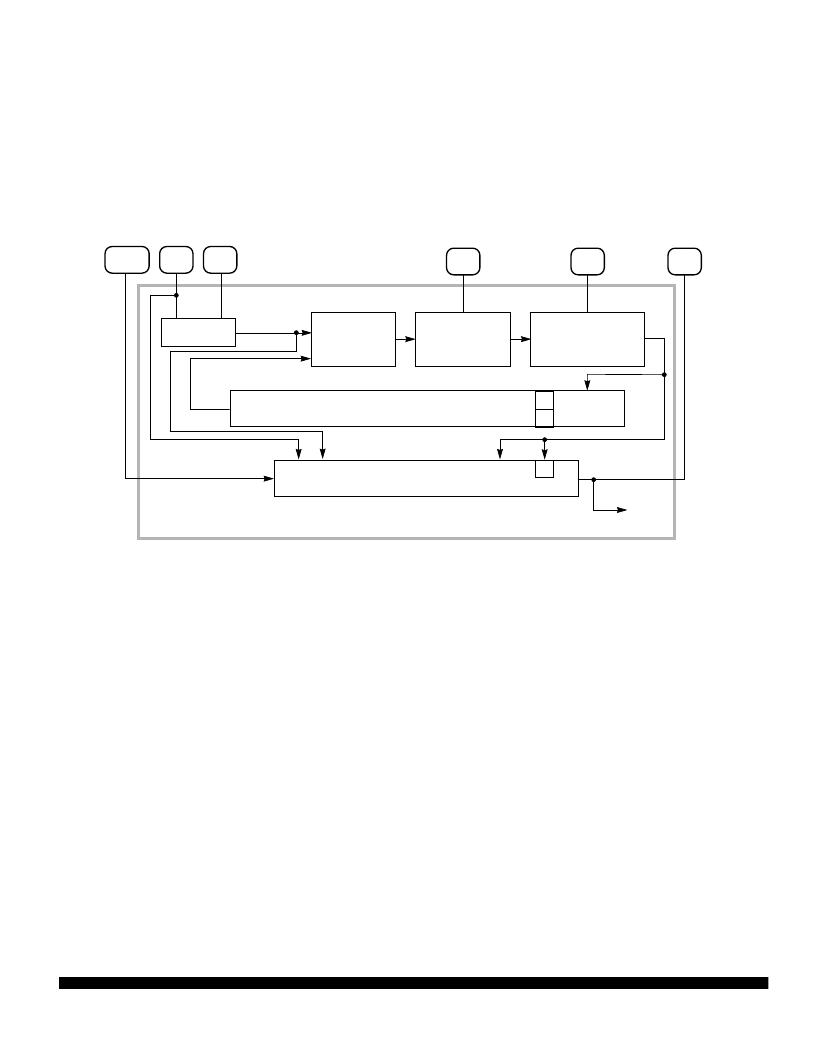- 您現在的位置:買賣IC網 > PDF目錄371046 > MC68CK338 (Motorola, Inc.) Highly Integrated, Low-Power, 32-Bit Microcontroller PDF資料下載
參數資料
| 型號: | MC68CK338 |
| 廠商: | Motorola, Inc. |
| 元件分類: | 32位微控制器 |
| 英文描述: | Highly Integrated, Low-Power, 32-Bit Microcontroller |
| 中文描述: | 高度集成,低功耗,32位微控制器 |
| 文件頁數: | 16/133頁 |
| 文件大小: | 798K |
| 代理商: | MC68CK338 |
第1頁第2頁第3頁第4頁第5頁第6頁第7頁第8頁第9頁第10頁第11頁第12頁第13頁第14頁第15頁當前第16頁第17頁第18頁第19頁第20頁第21頁第22頁第23頁第24頁第25頁第26頁第27頁第28頁第29頁第30頁第31頁第32頁第33頁第34頁第35頁第36頁第37頁第38頁第39頁第40頁第41頁第42頁第43頁第44頁第45頁第46頁第47頁第48頁第49頁第50頁第51頁第52頁第53頁第54頁第55頁第56頁第57頁第58頁第59頁第60頁第61頁第62頁第63頁第64頁第65頁第66頁第67頁第68頁第69頁第70頁第71頁第72頁第73頁第74頁第75頁第76頁第77頁第78頁第79頁第80頁第81頁第82頁第83頁第84頁第85頁第86頁第87頁第88頁第89頁第90頁第91頁第92頁第93頁第94頁第95頁第96頁第97頁第98頁第99頁第100頁第101頁第102頁第103頁第104頁第105頁第106頁第107頁第108頁第109頁第110頁第111頁第112頁第113頁第114頁第115頁第116頁第117頁第118頁第119頁第120頁第121頁第122頁第123頁第124頁第125頁第126頁第127頁第128頁第129頁第130頁第131頁第132頁第133頁

MOTOROLA
16
MC68CK338
MC68CK338TS/D
3.3 System Clock
The system clock in the SIML provides timing signals for the IMB modules and for an external peripheral
bus. Because the MCU is a fully static design, register and memory contents are not affected when the
clock rate changes. System hardware and software support changes in clock rate during operation.
The system clock signal can be generated in one of two ways. An internal phase-locked loop can
synthesize the clock from a reference frequency, or the clock signal can be input directly from an
external source. Keep these clock sources in mind while reading the rest of this section.
block diagram of the system clock.
Figure 5
is a
Figure 5 System Clock Block Diagram
3.3.1 Clock Sources
The state of the clock mode (MODCLK) pin during reset determines the system clock source. When
MODCLK is held high during reset, the clock synthesizer generates a clock signal from a reference
frequency connected to the EXTAL pin. The clock synthesizer control register (SYNCR) determines
operating frequency and mode of operation. When MODCLK is held low during reset, the clock
synthesizer is disabled and an external system clock signal must be applied. The SYNCR control bits
have no effect.
The input clock is referred to as “f
of the clock system is referred to as “f
ref
”, and can be either a crystal or an external clock source. The output
”. Ensure that f
ref
and f
sys
are within normal operating limits.
sys
The reference frequency for this MCU is typically 32.768 kHz, but can range from 25 kHz to 50 kHz. To
generate a reference frequency using the crystal oscillator, a reference crystal must be connected be-
tween the EXTAL and XTAL pins.
Figure 6
shows a recommended circuit.
16/32 PLL BLOCK
PHASE
COMPARATOR
LOW-PASS
FILTER
VCO
CRYSTAL
OSCILLATOR
SYSTEM
CLOCK
SYSTEM CLOCK CONTROL
FEEDBACK DIVIDER
W
Y
X
EXTAL
XTAL
XFC
CLKOUT
MODCLK
V
DDSYN
相關PDF資料 |
PDF描述 |
|---|---|
| MC68EC060 | 32-Bit Microprocessors.(32位微處理器) |
| MC68EN360RC25V | QUad Integrated Communications Controller Users Manual |
| MC68EN360CFE25 | QUad Integrated Communications Controller Users Manual |
| MC68EN360FE25 | AC 4C 4#12 PIN PLUG 023 |
| MC68EN360FE25V | QUad Integrated Communications Controller Users Manual |
相關代理商/技術參數 |
參數描述 |
|---|---|
| MC68CK338CPV14 | 制造商:Rochester Electronics LLC 功能描述:- Bulk |
| MC68CK338CPV14B1 | 制造商:FREESCALE 制造商全稱:Freescale Semiconductor, Inc 功能描述:32-Bit Modular Microcontroller |
| MC68CM16Z1 | 制造商:FREESCALE 制造商全稱:Freescale Semiconductor, Inc 功能描述:M68HC16Z Series |
| MC68CM16Z1CFC16 | 制造商:FREESCALE 制造商全稱:Freescale Semiconductor, Inc 功能描述:M68HC16Z Series |
| MC68CM16Z1CPV16 | 制造商:FREESCALE 制造商全稱:Freescale Semiconductor, Inc 功能描述:M68HC16Z Series |
發布緊急采購,3分鐘左右您將得到回復。